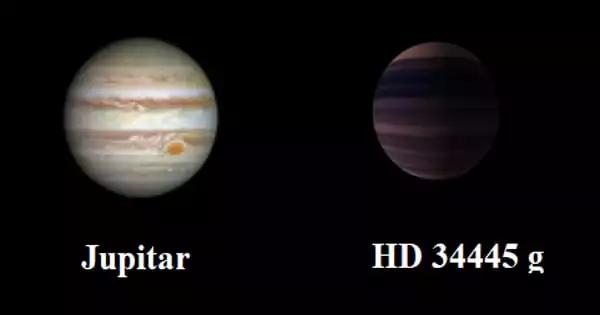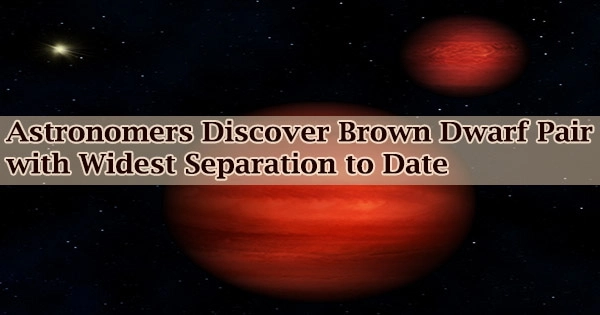A group lead by Paul Butler and Fabo Feng of Carnegie Mellon University found a collection of eight exoplanet candidates and five newly discovered exoplanets orbiting nearby red dwarf stars. The collection includes two potentially habitable worlds and a “cold Neptune” as well.
The two possibly habitable planets are among the closest stars to our own Sun, GJ180 and GJ229A, making them excellent candidates for investigations by upcoming space and ground-based telescopes. They are both super-Earths with at least 7.5 and 7.9 times our planet’s mass and orbital periods of 106 and 122 days respectively.
The Neptune-mass planet discovered orbiting GJ433 is likely the first of its kind to be a viable candidate for future direct imaging since it is located at a distance where surface water is most likely to be frozen.
“GJ 433 d is the nearest, widest, and coldest Neptune-like planet ever detected,” Feng added.
The newly discovered worlds were located using the planet-finding technique known as radial velocity, which makes use of the fact that a star’s gravity affects both the planet orbiting it and the star itself. By doing this, the star’s orbit begins to tremble somewhat, which may be seen by sophisticated detectors.
Red dwarfs are the main class of stars around which terrestrial mass planets can be discovered using this method since they have a lower mass than other stars. Red dwarfs, also known as M dwarfs, are the most prevalent stars in the galaxy and the major type of stars known to host terrestrial planets. They are cooler and smaller than our Sun.
Red dwarfs can also support planets on considerably closer orbits than those found in this so-called “habitable zone” orbiting other types of stars, and at the right temperature to have liquid water on their surfaces.
Our discovery adds to the list of planets that can potentially be directly imaged by the next generation of telescopes. Ultimately, we are working toward the goal of being able to determine if planets orbiting nearby stars host life.
Fabo Feng
“Many planets that orbit red dwarfs in the habitable zone are tidally locked, meaning that the period at which they spin around their axes is the same as the period at which they orbit their host star. This is similar to how our Moon is tidally locked to Earth, meaning that we only ever see one side of it from here. As a result, these exoplanets are a very cold permanent night on one side and very hot permanent day on the other not good for habitability,” explained lead author Feng. “GJ180d is the nearest temperate super-Earth to us that is not tidally locked to its star, which probably boosts its likelihood of being able to host and sustain life.”
The closest temperate super-Earth to us and the other potentially habitable planet is GJ229Ac, which is situated in a system where the host star has a brown dwarf companion. Brown dwarfs, often known as failed stars, are incapable of sustaining hydrogen fusion.
One of the first brown dwarfs to be imaged was the one in this system, GJ229B. This planetary system is an excellent case study for how exoplanets form and develop in a star-brown dwarf binary system, while it is unknown if they can support exoplanets on their own.
“Our discovery adds to the list of planets that can potentially be directly imaged by the next generation of telescopes,” Feng said. “Ultimately, we are working toward the goal of being able to determine if planets orbiting nearby stars host life.”
“We eventually want to build a map of all of the planets orbiting the nearest stars to our own Solar System, especially those that are potentially habitable,” added Carnegie co-author Jeff Crane.
This research effort which also included Carnegie’s Steve Shectman, John Chambers, Sharon Wang, Johanna Teske, Matías Díaz, and Ian Thompson, as well as Steve Vogt of U.C. Santa Cruz, Hugh Jones of University of Hertfordshire and Jennifer Burt of NASA’s Jet Propulsion Laboratory culled and reanalyzed data from the European Southern Observatory’s Ultraviolet and Visual Echelle Spectrograph survey of 33 nearby red dwarf stars, which operated from 2000 to 2007 and was released in 2009.
“We have been led to this result by antique data,” joked Butler.
The researchers combined observations from three planet-hunting equipment after finding targets in the UVES archives to improve the accuracy of the data. The Carnegie Planet Finder Spectrograph (PFS) at our Las Campanas Observatory in Chile, ESO’s High Accuracy Radial velocity Planet Searcher (HARPS) at La Silla Observatory, and the High Resolution Echelle Spectrometer (HIRES) at the Keck Observatory were all crucial to this effort.
“Combining the data from multiple telescopes increases the number of observations and the time baseline, and minimizes instrumental biases,” Butler explained.
















